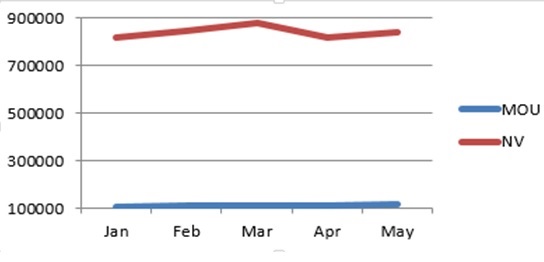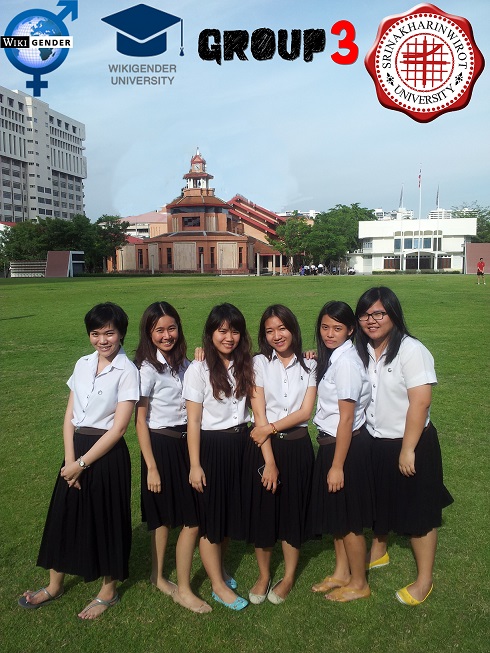The challenges of migration in Thailand
Revision for “The challenges of migration in Thailand” created on March 2, 2019 @ 07:38:41
|
The challenges of migration in Thailand
|
|
<p>
 </p> </p><div id="toc"> <h2>Table of Contents</h2> <ul> <li class="toclevel-1"><a href="#w_introduction"><span class="tocnumber">1</span> <span class="toctext">Introduction</span></a></li> <li class="toclevel-1"><a href="#w_reasons-for-migration-ltrefgtpollock-jackie-collateral-damage-httpwww-gaatw-orgcollateral20dam-collateraldamage-thailand-pdf-ltrefgt"><span class="tocnumber">2</span> <span class="toctext">Reasons for migration</span></a> <ul> <li class="toclevel-2"><a href="#w_outgoing-migration"><span class="tocnumber">2.1</span> <span class="toctext">Outgoing Migration</span></a></li> <li class="toclevel-2"><a href="#w_incoming-migration"><span class="tocnumber">2.2</span> <span class="toctext">Incoming Migration</span></a></li> </ul> </li> <li class="toclevel-1"><a href="#w_migration-challengesltrefgtmigrant-working-group-statistics-on-january-may-2012-retrieved-june-httpwww-mwgthailand-orgautopagev4show-all-phpauto-id2amptopicpk-ltrefgt"><span class="tocnumber">3</span> <span class="toctext">Migration challenges</span></a></li> <li class="toclevel-1"><a href="#w_migrant-working-group-statisticsltrefgtmigrant-working-grouphttpwww-mwgthailand-orgltrefgt"><span class="tocnumber">4</span> <span class="toctext">Migrant Working Group Statistics</span></a></li> <li class="toclevel-1"><a href="#w_see-also"><span class="tocnumber">5</span> <span class="toctext">See also</span></a></li> <li class="toclevel-1"><a href="#w_references"><span class="tocnumber">6</span> <span class="toctext">References</span></a></li> <li class="toclevel-1"><a href="#w_group3"><span class="tocnumber">7</span> <span class="toctext">Group3</span></a></li> </ul> </div> <h2 id="w_introduction">Introduction</h2> <p><a href="http://obatkutilkelaminpria.com/2019/02/27/luar-biasa-viral-kutil-kelamin-wanita-hilang-dengan-obat-ini/">Transnational</a> <a href="http://obatkutilkelaminpria.com/2019/02/27/kutil-kelamin-pria-inilah-ciri-serta-gejalanya-yang-perlu-di-ketahui/">migration</a> <a href="http://obatkutilkelaminpria.com/2019/02/27/ketahuilah-inilah-cara-mengobati-kutil-kelamin-secara-permanen-tanpa-rasa-sakit/">has</a> <a href="http://obatkutilkelaminpria.com/2019/02/26/ngeri-apa-sih-kutil-kelamin-serta-penyebabnya/">occurred</a> for many centuries in "Gender , with immigration to Thailand more common than emigration. The Chinese traders and labourers who arrived in Thailand during the 18th and 19th centuries made up the largest group of immigrants. Diverse nationalities include Indians and Westerners (the largest amount of visitors comes from the "Gender , "Gender , "Gender and Scandinavian countries. The largest expatriate communities in Thailand are located in Bangkok and Pattaya. Also, most of them are retired.)Vlady, Kate. Bending the Law; Breaking the Law : Study on Western Migration to Thailand. The Master of Arts in International Development Studies (MAIDS). Bangkok: Chulalongkorn University. Retrieved June 2013. <a href="http://arcmthailand.com/documents/documentcenter/BENDING%20THE%20LAW;%20BREAKING%20THE%20LAW%20Study%20on%20Western%20Migration%20to%20Thailand.pdf">http://arcmthailand.com/documents/doc…/BENDING%20THE%20LAW;%20BREAKING%20THE%20LAW%20Study%20on%20Western%20Migration%20to%20Thailand.pdf</a>. Aslo, the Japanese have also migrated to Thailand in large numbers. Today, migration and in particular illegal migration, has become a major issue in Thai society. Large populations from neighbouring countries such as "Gender , "Gender (Lao PDR) and "Gender , started migration to Thailand during the <a href="https://education.microsoft.com/Story/Lesson?token=W0Yrx">1990s</a> to escape poverty and political conflict. Whilst most found work, employment has become heavily segregated by gender. The most common age bracket for migrant women is 20 to 39 years old, making up about 52.1 percent of the female migrant labour force. Women aged 40 to 59 years old form about 39.2 percent of this population, while as few as 5.8 percent are aged 15 to 19 years. All migrants, including those from Myanmar, <a href="https://3dwarehouse.sketchup.com/collection/63ff627d-7060-4b07-8aca-03aac100686e/AMPUH-GUNAKAN-BAHAN-INI-UNTUK-MENGOBATI-AMBEIEN-SECARA-ALAMI">Cambodia</a> and <a href="https://3dwarehouse.sketchup.com/collection/b381656c-59d0-41ba-9b76-18e4a73607a0/Ampuh-100-Cara-Mengobati-Penyakit-Ambeien-Atau-Wasir-Secara-Alami">Lao PDR</a> who have entered Thailand illegally are at risk of arrest and deportation under existing Thai migration laws. Corruption exists, with police and immigration officials sometimes exploiting vulnerable migrants, demanding money to prevent deportation. Many migrants, particularly in border areas, report that police have been known to tear up payment receipts and continue to treat migrants as undocumented. Migrants have also been arrested for moving outside the area where they are registered or for failure to be present at the workplace indicated on their work permit card. This means that these migrants sometimes engage in prostitution, retail and hospitality work or work for someone else (in the case that their employer has sub-contracted them to another employer). Today Thailand’s migration policies seek to limit the number of migrants from neighbouring countries and keep the status of migrants temporary. Many individuals arrive in Thailand without any identification or documentation and continue to live and work in Thailand without the required documentation. For example, most of the estimated 200,000 Cambodian workers in Thailand migrated without documentation and identification, but the nationality verification (NV) process is working to improve their legitimacy. Harima, Reiko; & Director, Managing. (<a href="https://education.microsoft.com/Story/Lesson?token=1yjK3">2012</a>). Restricted Rights Migrant Women Workers in Thailand, Cambodia and Malaysia. War on Want. <a href="http://www.waronwant.org/attachments/WOW%20Migration%20Report%20low%20res.pdf">http://www.waronwant.org/attachments/WOW%20Migration%20Report%20low%20res…</a>.</p> <h2 id="w_reasons-for-migration-ltrefgtpollock-jackie-collateral-damage-httpwww-gaatw-orgcollateral20dam-collateraldamage-thailand-pdf-ltrefgt">Reasons for migration [1]</h2> <h3 id="w_outgoing-migration">Outgoing Migration</h3> <ul> <li>This mainly related to moving abroad to seek improved income and economic conditions, for example to alleviate rural poverty.</li> </ul> <h3 id="w_incoming-migration">Incoming Migration</h3> <ul> <li>Foreign workers sought to maintain economic growth and fill labour shortages.</li> <li>On the western border of Thailand, Myanmar has experienced considerable social, political and economic hardship. With violent repression during the pro-democracy uprising in 1988, and on-going military offensives by the ruling military regime against ethnic nationalities, hundreds of thousands of people have fled, and continue to flee across the border to Thailand. All workers who arrived in Thailand travelled without any documentation, leaving their own country illegally and also entering Thailand illegally.</li> </ul> <p>Some problems include:</p> <ul> <li><b>Without legal documentation</b>, cross-border migrants cannot travel independently within Thailand and require agents to negotiate at the numerous army and police checkpoints.</li> <li><b>Restrictions on the rights of the ethnic populations of Thailand</b> (commonly called hill-tribes) also encourage people to use agents.</li> <li><b>The cost of migrating is a root cause of vulnerability.</b> Migrants may sell their assets (e.g. land, animals) or borrow money either directly from agents or from moneylenders who charge huge interest rates. In some cases, employers pay upfront and the money is then deducted from the worker’s subsequent salary. In all of these situations migrants are bonded by debt, either to the moneylender or the employer. The pressure of making money to repay the agent or employer or to buy back assets at home, increases migrants’ risk of exploitation.</li> </ul> <h2 id="w_migration-challengesltrefgtmigrant-working-group-statistics-on-january-may-2012-retrieved-june-httpwww-mwgthailand-orgautopagev4show-all-phpauto-id2amptopicpk-ltrefgt">Migration challenges [2]</h2> <h2> </h2> <p>Below is a summary of key migration challenges associated with the movement of people to and from Thailand, in both sending and destination countries.</p> <ul> <li><b>Government policy on transnational migration</b></li> </ul> <p>Thailand does not have an explicit policy on international migration and fails to adequately protect migrants, and in particular the rights of migrant girls.</p> <ul> <li><b>Undocumented migration</b></li> </ul> <p>There is a need for more accurate estimates of the numbers of illegal migrants and profiles of their origins, activities and lengths of stay.</p> <ul> <li><b>The impact of transborder migration</b></li> </ul> <p>There are economic, socio-cultural, environmental and health impacts, as well as legal consequences resulting from population mobility. In particular, emigration from Thailand may contribute to the following: increased remittances sent back home, possibly more job opportunities for unemployed people but also migrants’ separation from their families and legal protection for Thai nationals is an issue. Further studies are required to understand the full impacts of transborder migration. Immigration to Thailand contributes to the following: the dependence on foreign labour for certain types of jobs, the risk of economic stagnation (i.e. shifting from labour-intensive to hi-technology production), the emergence of ethnic minority communities on Thai soil, the spread of infectious diseases and legal problems concerning the status and rights of migrant workers.</p> <ul> <li><b>The protection of migrants’ rights</b></li> </ul> <p><a href="http://obatkutilkelaminpria.com/2019/02/28/terbongkar-ini-dia-ternyata-salep-penghilang-kutil-kelamin/">The</a> <a href="http://obatkutilkelaminpria.com/2019/02/27/luar-biasa-viral-kutil-kelamin-wanita-hilang-dengan-obat-ini/">majority</a> <a href="http://obatkutilkelaminpria.com/2019/02/27/kutil-kelamin-pria-inilah-ciri-serta-gejalanya-yang-perlu-di-ketahui/">of</a> <a href="http://obatkutilkelaminpria.com/2019/02/27/ketahuilah-inilah-cara-mengobati-kutil-kelamin-secara-permanen-tanpa-rasa-sakit/">migrants</a> <a href="http://obatkutilkelaminpria.com/2019/02/26/ngeri-apa-sih-kutil-kelamin-serta-penyebabnya/">in</a> Thailand and Thai emigrants abroad are socio-economically disadvantaged compared to the populations in those areas where they have moved. Accordingly, they require additional protection. Thailand asks that countries of destination provide Thai migrants with proper rights in terms of wages, social welfare and other basic human rights. However, no reciprocal offer of the same standards of rights is required to be provided to migrants living on Thai soil. The law just covers for emergency cases; also, illegal immigrants try to avoid connecting to state agencies because they may be detained and sent back to their country of origin.</p> <ul> <li><b>The inadequacy of information on transnational migration</b></li> </ul> <p>Unlike internal migration, information on Thailand’s transborder migration is limited, incomplete, fragmented or unavailable. The Immigration Office provides aggregate numbers of persons who leave and enter the country. However, such numbers do not cover undocumented migration and the published breakdowns of migrants by gender, age, occupation and site of border crossing are inadequate. Thailand and/or the Asia-Pacific region should have a regional information centre on transnational migration to improve the accuracy of available information and data on the issue.</p> <ul> <li><b>HIV/AIDS</b></li> </ul> <p>The sex industry in Thailand has been an important issues since US troops started coming to Thailand for rest and recreation during the "Gender war. The industry continues to attract attention from the US government, who is concerned about public health issues, since US troops and tourists continue to fuel Thailand’s sex industry. In the early 1990s, Thailand was at the height of an HIV/AIDS epidemic, and migrant female sex workers were serving a clientele with high HIV prevalence. Sex workers who were debt-bonded to employers were unlikely to be able to refuse a customer who wanted sex without a condom and were likely required to service many customers in order to earn enough money to repay debts and hopefully to make some profit.</p> <h2 id="w_migrant-working-group-statisticsltrefgtmigrant-working-grouphttpwww-mwgthailand-orgltrefgt">Migrant Working Group Statistics [3]</h2> <p> The Migrant working group (MWG) is the organisation that has the responsibility to supervise and perform statistical data analysis on migrant workers to find issues that relate to their labour rights, health, education and activity, to monitor how these situations change and to provide information to a population that is interested in migrant workers’ stories.Huguet, Jerry; Aphicahat, Chamratrithirong; & Natail, Claudia. (2012). Thailand at a Crossroads : Challenges and Opportunities in Leveraging Migration for Development. international organization migration(IOM). 2012 <a href="http://www.migrationpolicy.org/pubs/LeveragingMigration.pdf">http://www.migrationpolicy.org/pubs/LeveragingMigration.pdf…</a>. <b>Table 1: Migrant Working Group Statistics on January – May 2012</b></p> <table class="wikitable"> <tbody> <tr> <th>Migrant Working Group</th> <th>Jan</th> <th>Feb</th> <th>Mar</th> <th>Apr</th> <th>May</th> </tr> <tr> <td>MOU</td> <td>107198</td> <td>11295</td> <td>111610</td> <td>109320</td> <td>118183</td> </tr> <tr> <td>NV</td> <td>817906</td> <td>848433</td> <td>877346</td> <td>821012</td> <td>843231</td> </tr> </tbody> </table> <p><b>Figure 1: Migrant Working Group Statistics on January – May 2012</b>  According to our study, the number of migrant workers in Thailand under the <a href="https://challenges.openideo.com/challenge/bridgebuilder2/impact/ampuh-100-cara-mengobati-penyakit-ambeien-atau-wasir-secara-alami">MOU</a> is less than eight times those working under the NV, meaning there is a loophole in the system of receiving migrants workers: there are inefficiencies by officials in charge of the law and regulation, which leads to many problems such as exploitation of migrants’ rights, their freedom, physical and mental health. It is recommended that the government looks at how the system can be improved in order to better welcome migrants workers and how the implementation of law and regulations can be better controlled. At the same time, non-governmental organisations (NGOs) should play a vital role in inspecting the work of the government, to protect the well-being and the quality of life of migrants. </p> According to our study, the number of migrant workers in Thailand under the <a href="https://challenges.openideo.com/challenge/bridgebuilder2/impact/ampuh-100-cara-mengobati-penyakit-ambeien-atau-wasir-secara-alami">MOU</a> is less than eight times those working under the NV, meaning there is a loophole in the system of receiving migrants workers: there are inefficiencies by officials in charge of the law and regulation, which leads to many problems such as exploitation of migrants’ rights, their freedom, physical and mental health. It is recommended that the government looks at how the system can be improved in order to better welcome migrants workers and how the implementation of law and regulations can be better controlled. At the same time, non-governmental organisations (NGOs) should play a vital role in inspecting the work of the government, to protect the well-being and the quality of life of migrants. </p><ul> <li>Memorandum of Understandings (<a href="https://challenges.openideo.com/challenge/bridgebuilder2/impact/cara-alami-menghilangkan-benjolan-ambeien-dengan-bawang-putih">MoUs</a>) signed: These express mutual agreements between Thailand with Lao PDR, Cambodia and Myanmar, under which migrant workers are recruited in their country and provided the necessary documents to migrate regularly to Thailand for employment.</li> </ul> <ul> <li>Nationality verification (NV): Migrants from Lao PDR, Cambodia and Myanmar who have entered Thailand illegally and are therefore reside and work illegally in Thailand, are required to have their nationality verified by their own governments for their status to be recognised. After the nationality verification process is complete, migrants may apply for a work permit in Thailand. The Thai government has created a new process for the extension of permits for migrant workers, which in the case of Burmese migrants involves a return to Burma and the recording of detailed biographical information.</li> </ul> <h2 id="w_see-also">See also</h2> <ul> <li>"Female</li> </ul> <h2 id="w_references">References</h2> <p>[1] Pollock, Jackie. Collateral Damage. <a href="http://www.gaatw.org/Collateral%20Damage_Final/CollateralDamage_THAILAND.pdf">http://www.gaatw.org/Collateral%20Dam…/CollateralDamage_THAILAND.pdf</a>. [2] Migrant Working Group Statistics on January – May 2012. Retrieved June. <a href="http://www.mwgthailand.org/autopagev4/show_all.php?auto_id=2&TopicPk">http://www.mwgthailand.org/autopagev4/show_all.php?auto_id=2&TopicPk…</a> [3] Migrant Working Group, <a href="http://www.mwgthailand.org/">http://www.mwgthailand.org/</a></p> <ul> <li>http://arcmthailand.com/documents/documentcenter/BENDING%20THE%20LAW;%20BREAKING%20THE%20LAW%20Study%20on%20Western%20Migration%20to%20Thailand.pdf</li> <li>http://www.waronwant.org/attachments/WOW%20Migration%20Report%20low%20res.pdf</li> <li>http://www.gaatw.org/Collateral%20Damage_Final/CollateralDamage_THAILAND.pdf</li> <li>http://www.unesco.org/most/apmrnw14.htm</li> <li>http://www.mwgthailand.org/autopagev4/show_all.php?auto_id=2&TopicPk</li> <li>http://www.migrationpolicy.org/pubs/LeveragingMigration.pdf</li> </ul> <h2 id="w_group3">Group3</h2> <p>ECS 485 B01Current economic problems and issues The members of Group 3 are: 1.Ms.Pattranit Sukumal 2.Ms.Thanchanog Satient 3.Ms.Benyaporn Punto 4.Ms.Panumart Lakthan 5.Ms.Pratinthip Inkhai 6.Ms.Thananan Laohasinnarong (From left to right)  </p> </p><pre>&nbsp;</pre> |


